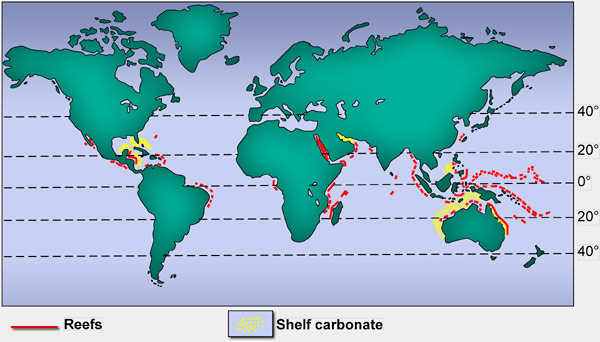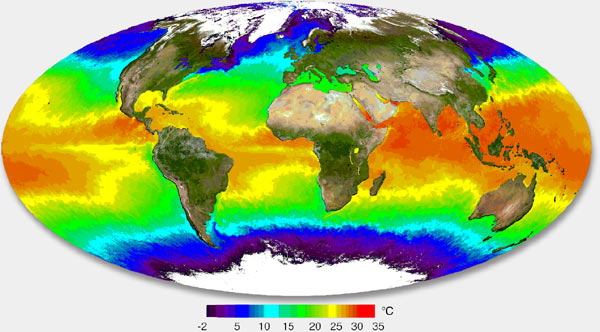
Introduction to Carbonate Environments, Facies, and Facies Tracts
Robert G. Loucks, Charles Kerans, Xavier Janson
Bureau of Economic Geology
| Design Objectives |
| Credits |
| Back |
| Top |
| Exit |
 |
 |
 |
|
MODERN WORLD OCCURRENCES The largest oil field, the Jurassic Ghawar field in Saudi Arabia, and the largest gas field, the Permian/Triassic North field in Qatar, are in carbonate rocks. Overall, carbonate reservoirs contain approximately 50% of the world hydrocarbon reserves. It is, therefore, important to understand under what conditions carbonate sediments are deposited so that we can understand their distribution in ancient strata. Wilson (1975) recognized that most carbonate sediments are the result of “a special marine environment: one of clear, warm, shallow water.” A map of the distribution of modern carbonate environments demonstrates that they are deposited predominantly north and south of the equator between latitudes of 30° north and south.
Water temperatures are optimal for carbonate production in this area.
This distribution of carbonate production is a result of carbonates forming through biological, chemical, and physical processes. Combinations of these processes produce predictable patterns of carbonate sedimentation. Different carbonate depositional environments contain assortments of different carbonate facies, with specific textures and fabrics promoting or hindering the future development of carbonate reservoirs upon burial in the subsurface. Because carbonate facies are deposited in an orderly manner in response to environmental processes, facies with potentially favorable reservoir quality can be predicted through an understanding of depositional processes and resulting distribution of depositional facies. |

